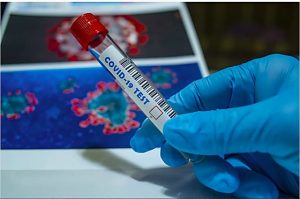In 2016 the tiny European country of Luxembourg announced an ambitious initiative to mine asteroids and other near-Earth objects (NEOs) for rare minerals. It wasn’t the country’s first foray into space—in the 1980s it launched some of the first European satellites—but the NEO mining plan represented a bold step for a country with the population of Milwaukee. The idea had roots in Luxembourg history: Blessed with rich deposits of iron ore, the country’s economy was powered for much of the 20th century by steel manufacturing. By the time the last iron mine closed in 1981, Luxembourg had already pivoted to financial services, which now accounts for 35 percent of its GDP, but since the 2008 financial crisis the country’s leaders have been looking to diversify the economy.
Italian photographer Ezio D’Agostino first learned about the NEO mining plan during an artist residency at Luxembourg’s Centre National de l’Audiovisuel (CNA). “I was interested in understanding why such a small country without a space agency like Luxembourg would be interested in such a complex and visionary space program,” D’Agostino says. With the help of the CNA, D’Agostino received permission from the Luxembourg government to document the early stages of the program, which it dubbed SpaceResources.
Because the program is still in its infancy—the first space flight isn’t expected to take place until the mid 2020s—D’Agostino took a more conceptual approach to the project. He shot abandoned steel mills from the heyday of iron ore mining, mining tools, industrial landfills, and rare metal collections in Luxembourg’s Museum of Natural History. The photographer describes the series as a “visual hypothesis about the forthcoming capitalization of outer space, built on the remains of our era.”
Luxembourg isn’t the only country interested in exploiting NEOs for their mineral riches. NASA and JAXA, the Japanese space agency, have both launched probes to explore the composition of nearby asteroids. In July, Japan’s Hayabusa-2 spacecraft landed on the surface of the asteroid Ryugu after a nearly five-year, 5.5 million–mile journey from Earth. NASA’s OSIRIS-REx probe arrived at the asteroid Bennu last December and is currently in orbit around the 500-meter-thick space rock while scientists decide where to land it. For would-be deep space prospectors, there’s even an online database ranking over 600,000 asteroids by the potential value of their minerals. (Ryugu is estimated to be worth $83 billion; Bennu, $670 million.)
D’Agostino believes the mining of NEOs will likely exacerbate existing wealth inequality. “In one or two hundred years, the private corporations that have access to space will control raw materials, and water, in a world emptied of resources,” he predicts. “And today, we can count those companies on the fingers of one hand.”
More Great WIRED Stories
- When influencers switch platforms—and bare it all
- Inside the hidden world of elevator phone phreaking
- Smaller cities are trying to plug America’s brain drain
- The radical transformation of the textbook
- How scientists built a “living drug” to beat cancer
- 👁 Facial recognition is suddenly everywhere. Should you worry? Plus, read the latest news on artificial intelligence
- 📱 Torn between the latest phones? Never fear—check out our iPhone buying guide and favorite Android phones


